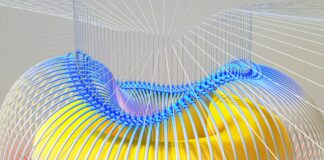Understanding how AI will change the Preventive health screenings is crucial for healthcare professionals, policy makers, and patients alike. From streamlining early disease detection to personalizing care plans, the way how AI will change the Preventive health screenings is setting the foundation for a more proactive, accurate, and data-driven healthcare system. As more healthcare providers explore how AI will change the Preventive health screenings, they realize the transformative impact of artificial intelligence on identifying risks early, optimizing workflows, and empowering patients with real-time insights.
1. AI Will Revolutionize Early Disease Detection
Artificial intelligence thrives on patterns—and preventive screening thrives on catching diseases before symptoms appear. AI can analyze vast datasets—medical records, imaging scans, and lab results—to identify early signs of conditions like cancer, heart disease, and diabetes. For instance, AI algorithms in mammography have proven capable of detecting breast cancer years before traditional screenings.
These systems continuously learn, improving accuracy as they process more data. Rather than relying solely on clinical judgment, healthcare professionals can now use AI as a diagnostic partner, boosting early detection rates and enabling earlier interventions.
2. AI Enables Personalized Screening Protocols
Not everyone has the same risk profile, so why should everyone follow the same screening schedule? AI makes it possible to personalize preventive screenings based on factors such as genetics, family history, environment, and lifestyle.
By leveraging machine learning algorithms, healthcare providers can predict which individuals are most likely to develop a disease and at what stage of life. For example, someone with a genetic predisposition to colon cancer may start screenings earlier or more frequently than someone without risk factors. This precision approach not only saves resources but improves patient outcomes.
3. Enhanced Imaging and Radiology Interpretation
Imaging is a cornerstone of preventive screening—whether it’s MRIs, CT scans, or X-rays. AI-powered tools such as computer vision and deep learning have drastically improved the accuracy and speed of interpreting these images. These tools highlight anomalies invisible to the human eye and reduce diagnostic errors caused by fatigue or oversight.
Radiologists now use AI as a second reader, especially in high-stakes areas like lung cancer screening or detecting tumors in dense breast tissue. It’s not just about better accuracy—it’s about providing reassurance and speeding up results for patients and clinicians alike.
4. Real-Time Monitoring Through Wearables and IoT
Wearables like smartwatches and fitness bands are transforming preventive healthcare by enabling continuous monitoring. These devices collect real-time health metrics such as heart rate variability, oxygen saturation, and sleep patterns. With AI analyzing this data, abnormalities can be flagged instantly.
Imagine an AI tool detecting irregular heartbeat patterns and alerting a patient to seek further testing for atrial fibrillation—a condition that could lead to stroke if untreated. This shift moves preventive screenings from occasional checkups to 24/7 vigilance, making health management an ongoing process.
5. Risk Stratification and Population-Level Insights
One of the major advantages of AI is its ability to process data at scale. Healthcare systems can use AI to perform risk stratification across large populations, identifying groups more likely to develop chronic illnesses and allocating resources accordingly.
For example, AI can analyze socioeconomic data, health history, and environmental exposures to flag a community at high risk for respiratory illnesses. Public health officials can then direct screening resources to those areas proactively. The ability to forecast disease trends improves not just individual outcomes but community health overall.
6. Automation of Administrative Tasks in Screenings
Preventive screenings involve a lot of administrative tasks—booking appointments, sending reminders, following up with labs, and entering data. AI-driven automation handles these repetitive tasks efficiently, freeing up clinicians to focus more on patient care.
Chatbots and virtual assistants powered by natural language processing (NLP) can guide patients through the screening process, remind them of appointments, or answer common questions about procedures. This reduces no-shows, increases patient compliance, and streamlines operations at healthcare facilities.
7. Integration with Electronic Health Records (EHRs)
One of the biggest breakthroughs in preventive screenings is the seamless integration of AI tools with EHRs. AI algorithms can scan patient histories in seconds and flag missing or overdue screenings, alerting both providers and patients.
For example, an AI assistant might detect that a 50-year-old patient has not had a colorectal cancer screening and automatically schedule one. It ensures no patient falls through the cracks, boosting the reach and effectiveness of preventive programs.
8. Faster and More Accurate Lab Testing
AI is speeding up the analysis of lab results, from blood tests to biopsies. Traditional testing can take days, but AI-powered systems are beginning to return preliminary insights in hours. These systems learn to recognize patterns in biological data that correspond to early disease markers.
In blood sample analysis, for instance, AI tools can predict the likelihood of certain cancers, autoimmune diseases, or infections far earlier than conventional testing. This drastically reduces turnaround time and speeds up intervention.
9. Reducing False Positives and Overdiagnosis
One criticism of preventive screening is the risk of overdiagnosis and false positives—leading to unnecessary tests, stress, and treatments. AI reduces this risk by improving specificity in diagnosis.
By cross-referencing multiple data sources—like genetic information, lifestyle factors, and biomarkers—AI can provide more nuanced assessments. This means only patients who truly need further testing get flagged, minimizing unnecessary procedures and the emotional toll of false alarms.
10. Ethical and Privacy Considerations in AI-Driven Screenings
With great power comes great responsibility. The use of AI in preventive health screenings raises concerns about privacy, data security, and bias. Algorithms trained on non-diverse datasets may underperform in certain populations, leading to healthcare disparities.
Additionally, patients need assurance that their sensitive health data is being handled securely. Regulations like HIPAA and GDPR are helping, but developers and healthcare institutions must prioritize transparency, equity, and ethical AI design.
There is also a growing push for explainable AI—systems that offer clear reasoning behind their decisions. This ensures clinicians understand why an AI flagged a patient for screening, which builds trust and accountability in the system.
Conclusion
The question is no longer whether AI will impact preventive health screenings—it’s how deeply it already has and how much further it will go. From early detection to real-time monitoring, from population health analytics to personalized care plans, artificial intelligence is making screenings smarter, faster, and more accurate.
However, while the benefits are immense, responsible implementation is critical. Healthcare systems must remain vigilant in addressing data privacy, avoiding algorithmic bias, and maintaining human oversight. The human touch is irreplaceable in medicine, and AI should act as a complement—not a replacement.
By embracing the potential of AI with thoughtful planning and patient-centered design, preventive health screenings can become more accessible, equitable, and impactful than ever before. The future is not only about treating diseases early—it’s about preventing them altogether.














